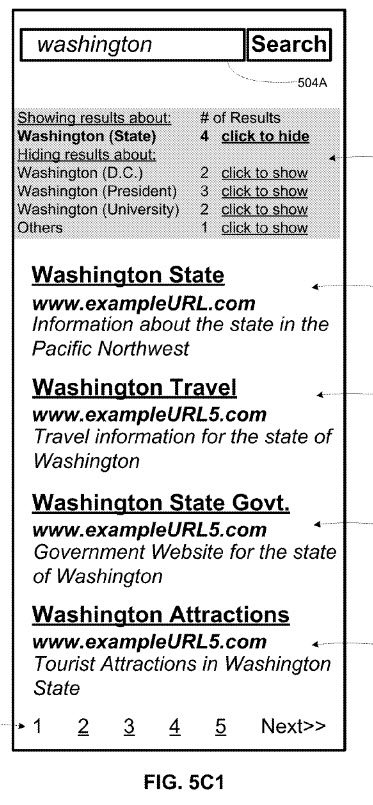Table of Contents
Queries and Known Entities
Google Search Engineer Paul Haahr gave a presentation at SMX in March titled How Google Works, and he shared some interesting information about how Google processed queries. He told us, for instance, that Google would often look to see if a query was associated with an entity, or as he puts it in the presentation, “Does the Query name any known entities?”
Related Content:
A Google patent Granted May 31, 2016, also focuses upon entities that appear in response to queries in search results and may hint at one way that Google may use entity information.
Search Results Filled with Entities
As an example, the patent tells us that a searcher may perform a search for the word “Penguins” which could include search results associated with the hockey team the Pittsburgh Penguins and the Book publishing group Penguin Group, as well as the bird penguins
A searcher might chose a search result after that [penguins] search of the birds, rather than the Hockey team or the Publishing Group. Google may decide to cluster the search results and omit any results involving the hockey team or the Publishers, in case the searcher returned to those search results to look at them some more.
This selection of one entity type would lead to an omission of the other entity types associated with that query.
This patent reminded me of a patent I wrote about last year, that talked about using a search selection to understand the classification of a query. I wrote about that one in the post Using Query User Data to Classify Queries, in which I mentioned that someone might search for [lincoln] and results for the 16th President of the United States, the town of that name in North Dakota, or the brand of an automobile by that name are all relevant to that query term, but the selection of one over the others might cause future searches for that searcher to favor the classification for the query that the searcher selected in that original search.
Clustering and Removing Entities from Search Results
Where this patent differs (other than it considering classifications of results, rather than different entities), is that this patent builds in a possibility for a searcher to click on something that would remove the other type of entities from search results for that searcher. Say someone searched for Washington, and the entities that showed up were the first president of the United States, the State of Washington, and the Capitol of the United States. The search results might allow a searcher to remove certain entities from results.
The granted patent is:
Modifying search results based on selection of one of the search results
Inventors: Hyunchan Kim
Assignee: Google
US Patent 9,355,158
Granted May 31, 2016
Filed: August 29, 2013
Abstract
Methods and apparatus for modifying search results based selection of one of the search results by a user to whom the search results are presented. Initially provided search results may include at least a first set of search results that are associated with a first entity and the second set of search results that are associated with a second entity. In response to a user selection of one of the search results of the first set, the initial search results may be modified to demote and/or omit those search results of the second set that are not also of the first set. The user may be provided with the modified search results.
Take Aways
This patent shows Google moving towards giving entities a more prominent place in search results, by not just identifying an entity that might be associated with a query, but also identifying all of the entities that might be associated with each search result listed responsive to that query.
Google may have all of the pieces in place to turn this on at any point that they might desire, and it would fit in well with Google’s move towards the Knowledge Graph that they’ve been working upon integrating into Search results since 2011.
It was possible at one point in time to block specific sites from appearing in your search results for a query. That was a capability Google tried out and ended up removing. That wouldn’t have blocked a specific entity like the process described in this patent might, just a specific web site.
Will this be something that Google implements? It’s difficult to say. We will need to wait and see.
Search News Straight To Your Inbox
*Required
Join thousands of marketers to get the best search news in under 5 minutes. Get resources, tips and more with The Splash newsletter:



